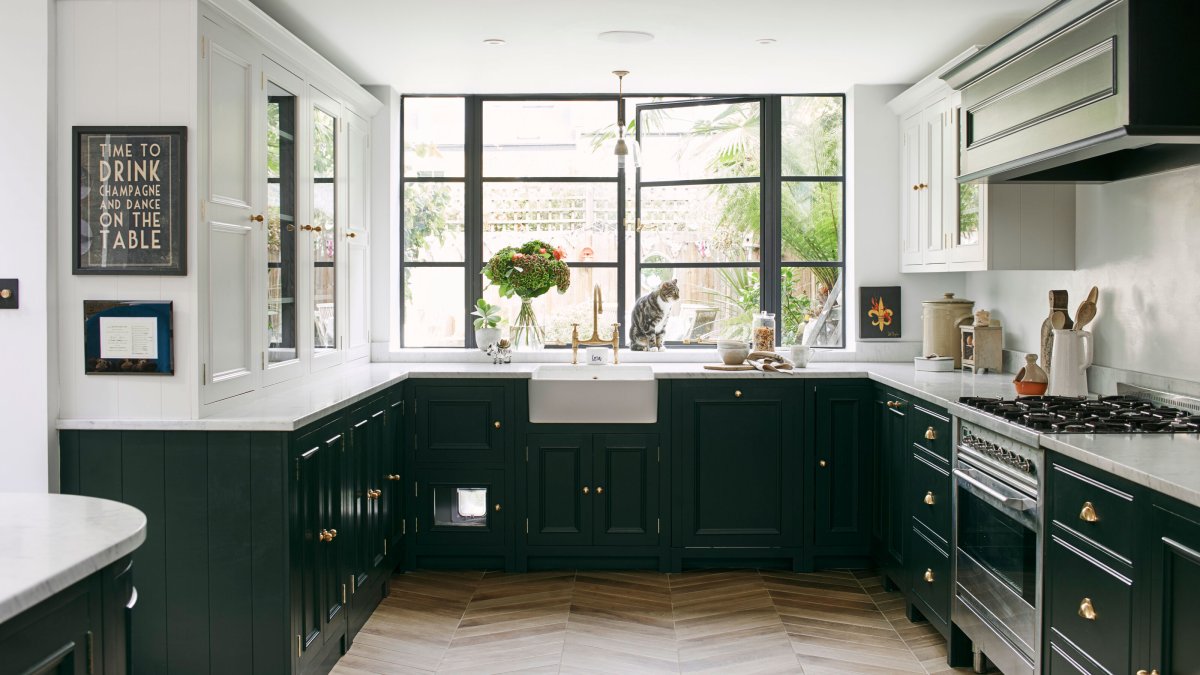
The kitchen is the heart of the home – it’s a place of nurturing, creation, and conversation. As such, designing a kitchen is a critical part of making a home both functional and comfortable. Among the most critical factors is choosing the right kitchen layout.
Two of the most popular layouts are the L-shaped and U-shaped designs – both have their strengths and weaknesses, and understanding these can help you make an informed decision.
In this blog post, we will dissect these two layouts and explore how the L kitchen layout and U-shaped design can optimise your kitchen’s flow.
What is an L-Shaped Kitchen Layout?
An L-shaped kitchen layout refers to a kitchen design where the cabinets and appliances are installed along two perpendicular walls of the kitchen, forming an “L” shape. The remaining space is often used for a dining area, a small island, or simply left open, depending on the overall kitchen size.
Advantages of L-Shaped Layouts
- Open Layout: This design opens up the room, making it feel spacious and airy. It’s ideal for both small and large kitchens and is especially beneficial for open floor plans, where the kitchen blends seamlessly with other living areas.
- Efficient for Solo Cooks: With all the appliances within easy reach, an L-shaped kitchen layout is perfect for households with one primary cook. The “work triangle” – the path between the refrigerator, stove, and sink – is compact and easy to navigate.
- Ideal for Multi-Functional Use: The openness of the L-shaped design allows for multi-functionality. You can easily add a dining table or kitchen island in the free space, which can serve as a prep area, breakfast nook, or a spot for socialising.
Limitations of L-Shaped Layouts
- Limited Counter Space: If you have a smaller L-shaped kitchen, counter space may be limited, especially if you have numerous kitchen appliances.
- Not Ideal for Multiple Cooks: If multiple people are cooking simultaneously, an L-shaped layout may become congested.
What Is a U-Shaped Kitchen Layout?
In a U-shaped kitchen layout, cabinets and appliances line three walls, creating a “U” shape. This design often features a significant amount of counter space and storage, which can be a boon for avid cooks.
Advantages of U-Shaped Layouts
- Ample Storage and Counter Space: The U-shaped layout provides plenty of cabinet and counter space. With three walls dedicated to storage and appliances, you’ll have ample room for all your cooking necessities.
- Efficient for Multiple Cooks: This layout can easily accommodate more than one cook at a time. The ample counter space and the wider work triangle make it possible for several people to prepare food simultaneously without getting in each other’s way.
- Defined Kitchen Area: A U-shaped kitchen clearly delineates the kitchen area from the rest of the house, which can be an advantage if you prefer a separate cooking area.
Limitations of U-Shaped Layouts
- Can Feel Cramped: In smaller spaces, a U-shaped kitchen can feel a bit cramped or claustrophobic, especially if upper cabinets are installed on all three walls.
- Potential Wasted Space: If not designed properly, the U-shaped layout can lead to wasted space in the corners. It requires careful planning to ensure every inch is utilised effectively.
Choosing Between L-Shaped and U-Shaped Kitchen Layouts
When choosing between an L-shaped and a U-shaped kitchen layout, you need to consider the available space, the number of cooks who’ll typically use the kitchen, and your storage needs. An open-plan living space can benefit significantly from an L-shaped layout’s open and flowing design. On the other hand, a U-shaped layout might work best in a larger space or for families who enjoy cooking together.
At the end of the day, both the L-shaped and U-shaped kitchen layouts have the potential to optimise your kitchen’s flow and functionality. Your personal preferences and lifestyle will ultimately determine which layout is the most suitable choice for you.
Remember, a well-planned kitchen, regardless of its shape, will not only make cooking and dining a more enjoyable experience, but it also increases your home’s value. So, make your choice wisely, and happy cooking!
Ava Clarkson
Related posts
Stay connected
Today's pick
- Things to Remember While Designing Your Custom Modular Kitchen in GurgaonGurgaon now known as Gurugram is the second largest city in the state of Haryana and is a reflectiossn of an ideal modern city with futuristic goals. Witnessing rapid urbanization, it has also emerged as a hub for contemporary homes, with homeowners seeking innovative and... The post Things to Remember While Designing Your Custom Modular […]

